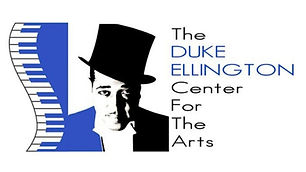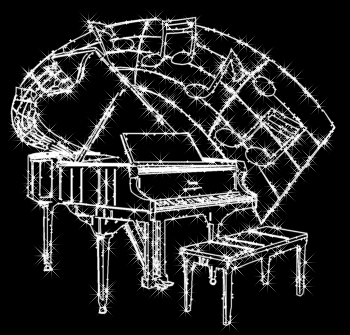

EPACHA.org

Environmental Protection Alliance and Center for Humanitarian Affairs Foundation
"REBUILDING OUR WORLD BLOCK-BY-BLOCK"
T h e P o r t a l s o f E P A C H A F o u n d a t i o n – P h a s e I I a r e O p e n :

Taking the "A Train" With
Duke Ellington!



Courtesy, [Top R] https://www.chicagoreviewpress.com/duke-ellington-products-9781556527241.php; [Video Bottom R] The78Prof
"Duke Ellington" was the greatest jazz composer and bandleader of his time.
One of the originators of
big-band jazz, he led his band for
more than 50 years and composed thousands of scores.
Duke Ellington:
The Quintessential Composer
of the 20th Century?
. . . or . . .
The Godfather of Jazz!
Courtesy, [L] https://thesongbook.org/hall-of-fame/songbook-hall-of-fame-honorees/duke-ellington/
[C] https://www.amazon.com/Godfather-Jazz-Duke-Ellington-Documentary/dp/B078HHW8P6
[R] https://www.halleonard.com/product/289049/best-of-duke-ellington
Without a doubt . . .
"Duke Ellington" was both!
Learning more about the musical genius of Duke Ellington - a worthwhile read for
jazz & music lovers around the world.
The following text is a Courtesy of Wikipedia The Free Encyclopedia
Edward Kennedy "Duke" Ellington (April 29, 1899 – May 24, 1974) was an American jazz pianist, composer, and leader of his eponymous jazz orchestra from 1923 through the rest of his life.
Born and raised in Washington, D.C., Ellington was based in New York City from the mid-1920s and gained a national profile through his orchestra's appearances at the Cotton Club in Harlem. A master at writing miniatures for the three-minute 78 rpm recording format, Ellington wrote or collaborated on more than one thousand compositions; his extensive body of work is the largest recorded personal jazz legacy, and many of his pieces have become standards. He also recorded songs written by his bandsmen, such as Juan Tizol's "Caravan", which brought a Spanish tinge to big band jazz.
At the end of the 1930s, Ellington began a nearly thirty-year collaboration with composer-arranger-pianist Billy Strayhorn, whom he called his writing and arranging companion. With Strayhorn, he composed multiple extended compositions, or suites, as well as many short pieces. For a few years at the beginning of Strayhorn's involvement, Ellington's orchestra featured bassist Jimmy Blanton and tenor saxophonist Ben Webster and reached a creative peak. Some years later following a low-profile period (Hodges temporarily left), an appearance by Ellington and his orchestra at the Newport Jazz Festival in July 1956 led to a major revival and regular world tours. Ellington recorded for most American record companies of his era, performed in and scored several films, and composed a handful of stage musicals.
Although a pivotal figure in the history of jazz, in the opinion of Gunther Schuller and Barry Kernfeld, "the most significant composer of the genre", Ellington himself embraced the phrase "beyond category", considering it a liberating principle, and referring to his music as part of the more general category of American Music.
Ellington was known for his inventive use of the orchestra, or big band, as well as for his eloquence and charisma. He was awarded a posthumous Pulitzer Prize Special Award for music in 1999.

Duke Ellington's childhood and younger years.
Duke Ellington was born on April 29, 1899, to James Edward Ellington and Daisy (née Kennedy) Ellington in Washington, D.C. Both his parents were pianists. Daisy primarily played parlor songs, and James preferred operatic arias. They lived with Daisy's parents at 2129 Ida Place (now Ward Place) NW, in D.C.'s West End neighborhood. Duke's father was born in Lincolnton, North Carolina, on April 15, 1879, and moved to D.C. in 1886 with his parents. Daisy Kennedy was born in Washington, D.C., on January 4, 1879, the daughter of two former American slaves. James Ellington made blueprints for the United States Navy.
When Ellington was a child, his family showed racial pride and support in their home, as did many other families. African Americans in D.C. worked to protect their children from the era's Jim Crow laws.
At age seven, Ellington began taking piano lessons from Marietta Clinkscales. Daisy surrounded her son with dignified women to reinforce his manners and teach him elegance. His childhood friends noticed that his casual, offhand manner and dapper dress gave him the bearing of a young nobleman, so they began calling him "Duke". Ellington credited his friend Edgar McEntee for the nickname: "I think he felt that in order for me to be eligible for his constant companionship, I should have a title. So he called me Duke."
Though Ellington took piano lessons, he was more interested in baseball. "President [Theodore] Roosevelt would come on his horse sometimes, and "stop and watch us play", he recalled. Ellington went to Armstrong Technical High School in Washington, D.C. His first job was selling peanuts at Washington Senators baseball games.
Ellington started sneaking into Frank Holiday's Poolroom at age fourteen. Hearing the music of the poolroom pianists ignited Ellington's love for the instrument, and he began to take his piano studies seriously. Among the many piano players he listened to were Doc Perry, Lester Dishman, Louis Brown, Turner Layton, Gertie Wells, Clarence Bowser, Sticky Mack, Blind Johnny, Cliff Jackson, Claude Hopkins, Phil Wurd, Caroline Thornton, Luckey Roberts, Eubie Blake, Joe Rochester, and Harvey Brooks.
In the summer of 1914, while working as a soda jerk at the Poodle Dog Café, Ellington wrote his first composition, "Soda Fountain Rag" (also known as the "Poodle Dog Rag"). He created the piece by ear, as he had not yet learned to read and write music. "I would play the 'Soda Fountain Rag' as a one-step, two-step, waltz, tango, and fox trot", Ellington recalled. "Listeners never knew it was the same piece. I was established as having my own repertoire." In his autobiography, Music is my Mistress (1973), Ellington wrote that he missed more lessons than he attended, feeling at the time that piano was not his talent.
Ellington continued listening to, watching, and imitating ragtime pianists, not only in Washington, D.C. but also in Philadelphia and Atlantic City, where he vacationed with his mother during the summer. He would sometimes hear strange music played by those who could not afford much sheet music, so for variations, they played the sheets upside down. Henry Lee Grant, a Dunbar High School music teacher, gave him private lessons in harmony. With the additional guidance of Washington pianist and band leader Oliver "Doc" Perry, Ellington learned to read sheet music, project a professional style, and improve his technique. Ellington was also inspired by his first encounters with stride pianists James P. Johnson and Luckey Roberts. Later in New York, he took advice from Will Marion Cook, Fats Waller, and Sidney Bechet. He started to play gigs in cafés and clubs in and around Washington, D.C. His attachment to music was so strong that in 1916 he turned down an art scholarship to the Pratt Institute in Brooklyn. Three months before graduating, he dropped out of Armstrong Manual Training School, where he was studying commercial art.
Learn more about the Life & Legacy of
Duke Ellington

EPACHA Foundation Extends
Sincerest Thanks to
DUKE ELLINGTON
for many years of cherished memories and
also for helping to make EPACHA's
"Taking the A Train"
webpage
in Honor
of . . .
DUKE ELLINGTON
"All Aboard!"
Courtesy, morrisoncoursevids
"Take the 'A' Train" is a jazz standard
by Billy Strayhorn that was the signature tune of
the Duke Ellington Orchestra.
Wait! There's More!
Show Your Support for



Humanity Thanks
"Duke Ellington!"
If you’ve missed the work of EPACHA in its Phase I duration, please be encouraged to click on the below web links.
Sincerest Thanks are Extended to http://archive.org/web/ for having made possible an archived viewing of
EPACHA Foundation’s entire volume of its Phase I web pages:

https://web.archive.org/web/20180321225044/http://www.epacha.org/Pages/Home_Page_BkUp3.aspx
Complete List of EPACHA - Phase I web pages:
F E B R U A R Y 2 0 2 3












